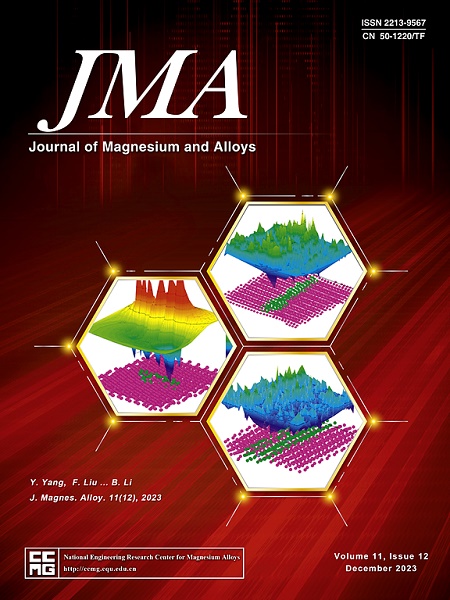生物活性外泌体修饰的可生物降解镁合金用于心血管支架应用
IF 15.8
1区 材料科学
Q1 METALLURGY & METALLURGICAL ENGINEERING
引用次数: 0
摘要
本文章由计算机程序翻译,如有差异,请以英文原文为准。
Biodegradable Mg alloy modified with bioactive exosomes for cardiovascular stent application
Cardiovascular stent has been widely applied to treat cardiovascular disease (CVD), which is the major disease contribution to mortality in the world wide. Biodegradable magnesium (Mg) alloys are the encouraging materials in cardiovascular stents benefit from absorbability and biocompatibility. While, the ability of degradation is a double-edged sword for manufacture stent, modifying the surface to decrease the excessive degradation rate and promote the surface endothelialization could expand the prospect of the further application. In this work, the biodegradable Mg-Zn-Y-Nd alloy was modified by MgF2 and dopamine polymer film (PDA) as the corrosion resistance layer and the bonding layer respectively, and then the exosome, a natural nanoparticle contains mRNAs and proteins, was tailored to give the surface better biocompatibility. The electrochemical test and weight loss test reflected the MgF2-PDA/exosome coating increase the corrosion resistance of the Mg-Zn-Y-Nd alloy. The cytocompatibility data indicated the novel MgF2-PDA/exosome coating selectively reduced the tumor necrosis factor (TNF-α) expression and ROS release from macrophage, and promoted the α-SMA expression of smooth muscle cells. In addition, the MgF2-PDA/exosome coating also improved the adhesion, proliferation, CD31 expression and nitric oxide (NO) release of vascular endothelial cells (ECs), all of which contribute to the surface endothelialization. And the mechanism experiments showed the exosome released from the coating uptake by the ECs and assemble around the lysosome and mitochondria, and the released rate of the exosome on the coating is around 5 to 7 days, indicating excellent multi-functions of MgF2-PDA/exosome coating in cardiovascular stent.
求助全文
通过发布文献求助,成功后即可免费获取论文全文。
去求助
来源期刊

Journal of Magnesium and Alloys
Engineering-Mechanics of Materials
CiteScore
20.20
自引率
14.80%
发文量
52
审稿时长
59 days
期刊介绍:
The Journal of Magnesium and Alloys serves as a global platform for both theoretical and experimental studies in magnesium science and engineering. It welcomes submissions investigating various scientific and engineering factors impacting the metallurgy, processing, microstructure, properties, and applications of magnesium and alloys. The journal covers all aspects of magnesium and alloy research, including raw materials, alloy casting, extrusion and deformation, corrosion and surface treatment, joining and machining, simulation and modeling, microstructure evolution and mechanical properties, new alloy development, magnesium-based composites, bio-materials and energy materials, applications, and recycling.
 求助内容:
求助内容: 应助结果提醒方式:
应助结果提醒方式:


